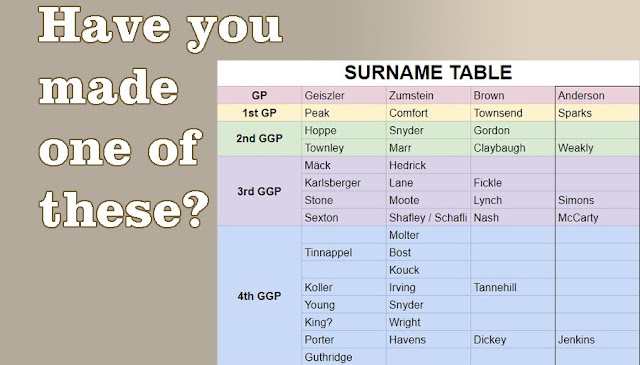How to Arrange Photos in Family Histories
Reader Question: Where should I put the photos in my writing? Should I put the images next to the paragraph I wrote? Should I put them at the end of a chapter? Or should I put all the photos in a photo section? ~ Robert Murphy, PA
Thanks, Robert. Great question.
Having written over 120 drafts of my ancestor's life histories and publishing numerous scrapbooks and family journals, I suggest the following:
Keep it Simple
Keep Photos Close the "The Action"
I would avoid creating a 'photo section' at the end of a chapter or an entire book. Think about a history textbook, not that we're striving to write in that length (or boring fashion), but picture a history textbook or any non-fiction book written for children. Where are the pictures of the airplanes, political leaders, or animals? They are placed beside next to the subjects of the paragraphs. Children would rarely turn to the back of a book to find a photo section or even the end of the chapter. They want a picture of George Washington right next to the text about the first United States President.
Anyone born in the 1970s to the present, grew up with this style of non-fiction publishing standard, so if you want your descendants to appreciate the photos and the text you've compiled in your writing, place the picture, document, map, or other images as close to the sentences or paragraphs to which these graphics refer.
The way I learn best is to see examples. Here are a few images that I inserted into my self-published book about my ancestor Joseph Geiβler.
 |
| Full page photo with a caption |
 |
| Full page document with caption and chapter endnote reference. |
The question you have to ask yourself is what is critical, genealogical standards or enjoyment of your reader? If you want to follow stringent genealogical guidelines, place a citation under the image. If you prefer to create an enjoyable reading experience for the average reader, then use the caption with the chapter endnotes method. (Bet you can tell real quick which one I use more often than not.)
 |
| Example with graphic at the top of the page. |
If you have a horizontal or landscape image, you should insert the image anywhere on the page close to the paragraph that discusses the content of the picture.
Sometimes your image will appear at the top of a page, in the middle or the bottom.
I suggest not having an image on a separate page from the paragraphs discussing said graphic, as much as possible. I may have to add the photo, map, or document before I introduce the subject or after. Placement of graphics is a matter of art rather than science. Just don't waste half a page in your book because you kept the horizontal images on a separate page from the text.
 |
| Example with a graphic in the middle of the page. |
Break up the flow of paragraphs by inserting images on a separate line (with captions or sources below in a smaller font than the main text). You can use this principle for portrait oriented photos as well.
 |
| Text wrapped image. Captions are optional. |
Finally, you can insert an image in such a way that it is small enough to wrap text around it. Captions in the publishing sense may have a quick explanation of the graphic or may be a source citation.
Be sure the citation is not the same size or larger than the inserted graphics. Also, be sure the caption font is at least 2 points smaller and usually a different font family than your body text.
BONUS TIP: Do not use Google Docs to layout your pages. It is not meant to be a self-publishing platform. You can use Microsoft Word, OpenOffice Writer, or Apple Pages to format your book. You can splurge and use publishing software.
Do you have any questions about writing or self-publishing? Use the comment section or the contact us form and let us know. We may feature inquiry in a future blog post or video.





Comments
Post a Comment